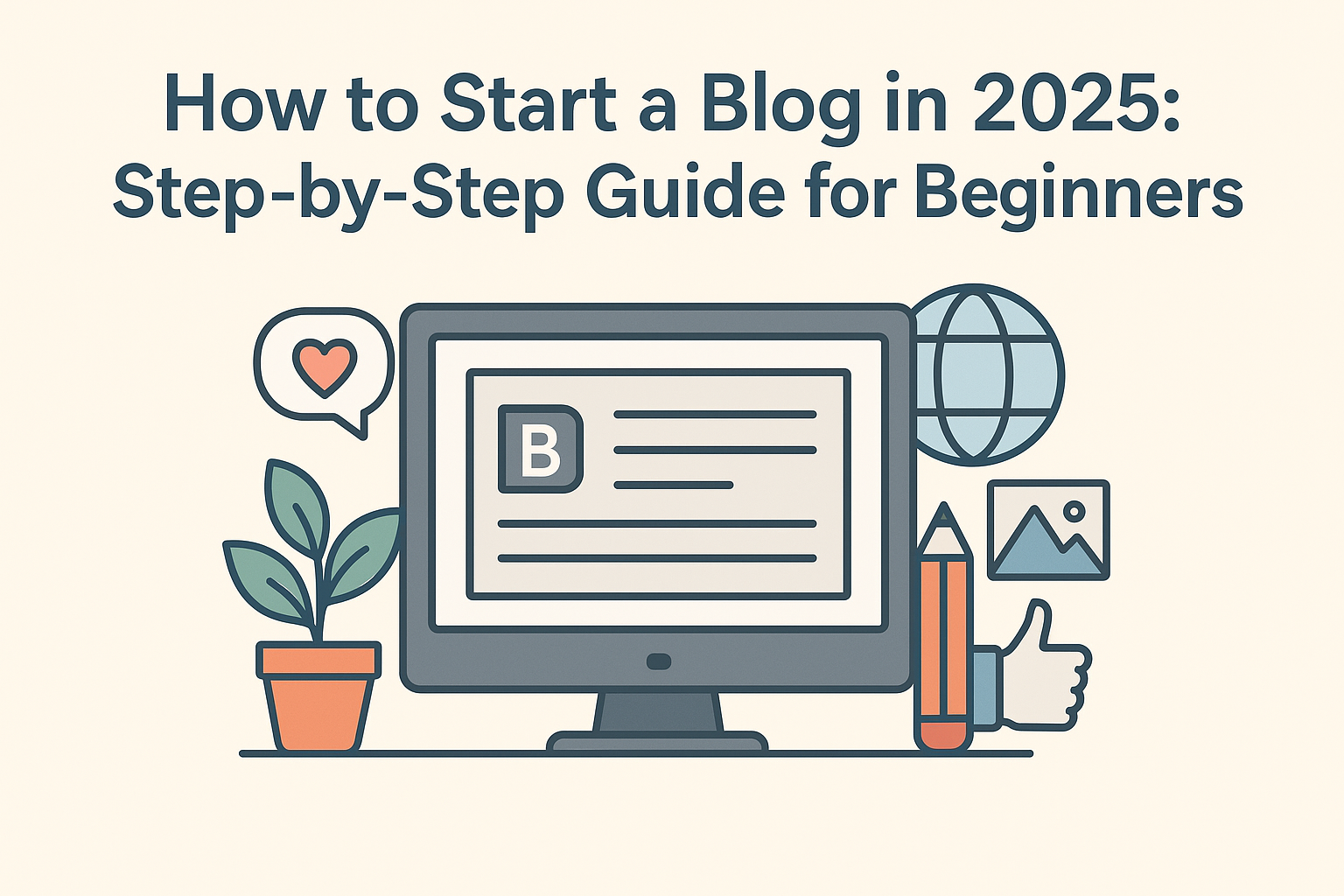Blogging in 2025 is not what it was five years ago. It’s smarter, more creative, and yes, a little competitive — but that’s exactly why now is a brilliant time to start. Whether you want to share your passions, build a personal brand, or earn a living online, this step-by-step guide will walk you through everything you need to know.
By the time you’ve reached the end, you won’t just think about starting a blog — you’ll actually have one up and running. So, grab a cuppa, and let’s get started.
1. Understand Why You Want to Blog
Before we jump into the techy stuff, take a step back and ask yourself: Why do I want to start a blog?
For fun – A hobby blog for sharing recipes, travel diaries, or creative writing.
For income – Turning your knowledge into an online business.
For influence – Building authority in your niche and growing an audience.
Being clear about your why will guide every decision you make — from your niche to your monetisation strategy.
💡 Pro Tip: If your goal is to turn blogging into a business, think long-term. This isn’t a “get rich quick” gig. Consistency is your best friend.
2. Choose Your Niche
Picking a niche in 2025 is about standing out, not just fitting in. With AI-generated content flooding the internet, readers crave authenticity and personal experience.
Ask yourself:
What topics do I love talking about?
What am I good at or knowledgeable in?
Can I create content for this topic for at least the next year?
Some profitable niches for 2025 include:
Sustainable living
AI tools & tech
Health & wellness
Travel & remote work
Personal finance
3. Pick a Memorable Blog Name
Your blog name is your online identity, so make it catchy, easy to remember, and brandable.
A good blog name should:
Be easy to spell and pronounce
Avoid hyphens and numbers
Give a hint about your niche
Example: If you’re starting a travel blog, something like RoamWithElla is far more memorable than Ella’s Travel Blog 123.
4. Get Your Domain and Hosting
This is where things get real. You’ll need:
A domain name – Your blog’s address (e.g.,
myawesomeblog.com)Web hosting – The home for your blog’s files
Look for hosting providers with:
Fast loading speeds
Reliable uptime
Free SSL certificates
Good customer support
If you’re not sure where to start, check out the services we offer at WebJourny — we can help set up your hosting, domain, and even get your WordPress site ready in no time.
5. Install WordPress
Yes, there are plenty of website builders in 2025, but WordPress still reigns supreme for bloggers. It’s flexible, SEO-friendly, and there’s a plugin for almost everything.
How to install WordPress:
Most hosting providers offer a one-click install option
Log into your hosting control panel
Look for the WordPress icon and follow the setup steps
6. Choose a Theme and Customise Your Blog
Your theme controls your blog’s look and feel. Choose one that’s:
Mobile-responsive
Lightweight (for faster loading)
Customisable without needing coding skills
Popular options:
Astra
GeneratePress
Kadence
Need help designing your blog? Our Packages include professional theme setup, so you can focus on creating content while we handle the tech.
7. Install Essential Plugins
Here are must-have WordPress plugins for 2025:
Yoast SEO – Optimise for search engines
WP Rocket or LiteSpeed Cache – Boost site speed
UpdraftPlus – Backups
WPForms – Create contact forms
Rank Math – SEO alternative to Yoast
8. Plan Your Content Strategy
Your content is your currency. Without it, your blog is just an empty shell.
Start with:
Pillar posts – In-depth guides that position you as an authority
How-to articles
List posts – People still love “Top 10” style posts
Personal stories – Adds a human touch
You can check out our own blog for inspiration.
9. Write Your First Blog Post
When writing, keep these tips in mind:
Speak directly to your reader
Use short paragraphs and subheadings
Add visuals to break up text
End with a call-to-action
Example first post ideas:
“Why I Started My Blog and What You Can Expect”
“10 Things I Wish I Knew Before Blogging”
10. Promote Your Blog
Even the best content won’t get noticed without promotion. In 2025, you should:
Share posts on social media platforms where your audience hangs out
Join online communities in your niche
Guest post on related blogs
Use Pinterest — it’s still gold for traffic
11. Monetise Your Blog
Once you have consistent traffic, you can explore monetisation options:
Affiliate marketing
Sponsored posts
Digital products
Online courses
Advertising
If you want a full monetisation plan, get in touch via our contact page — we can help create a strategy tailored to your niche.
12. Keep Going and Stay Consistent
Blogging is a marathon, not a sprint. You might not see results in the first few months, but with consistency and smart strategies, you can turn your blog into a valuable online asset.
Frequently Asked Questions (FAQ)
Q1: Do I need technical skills to start a blog?
No, you don’t. Platforms like WordPress make blogging beginner-friendly, and services like WebJourny can handle the technical setup for you.
Q2: How much does it cost to start a blog in 2025?
Expect to spend around £50–£150 for your domain, hosting, and a professional theme.
Q3: How long does it take to make money from blogging?
It varies. Some bloggers see income within six months, but for most, it takes a year or more to earn a steady income.
Q4: Is blogging still worth it in 2025?
Absolutely. While competition has increased, the demand for authentic, valuable content is stronger than ever.

